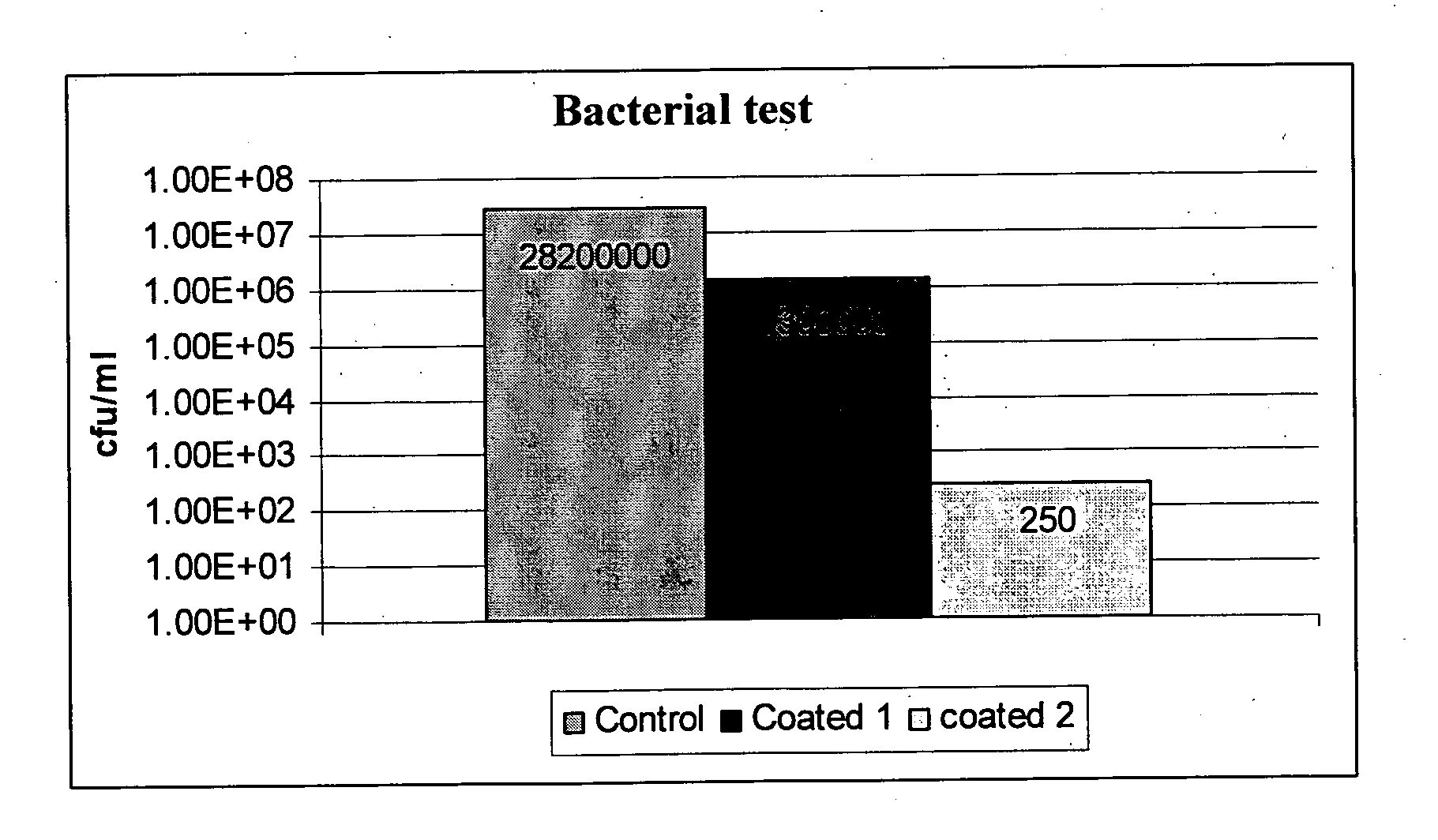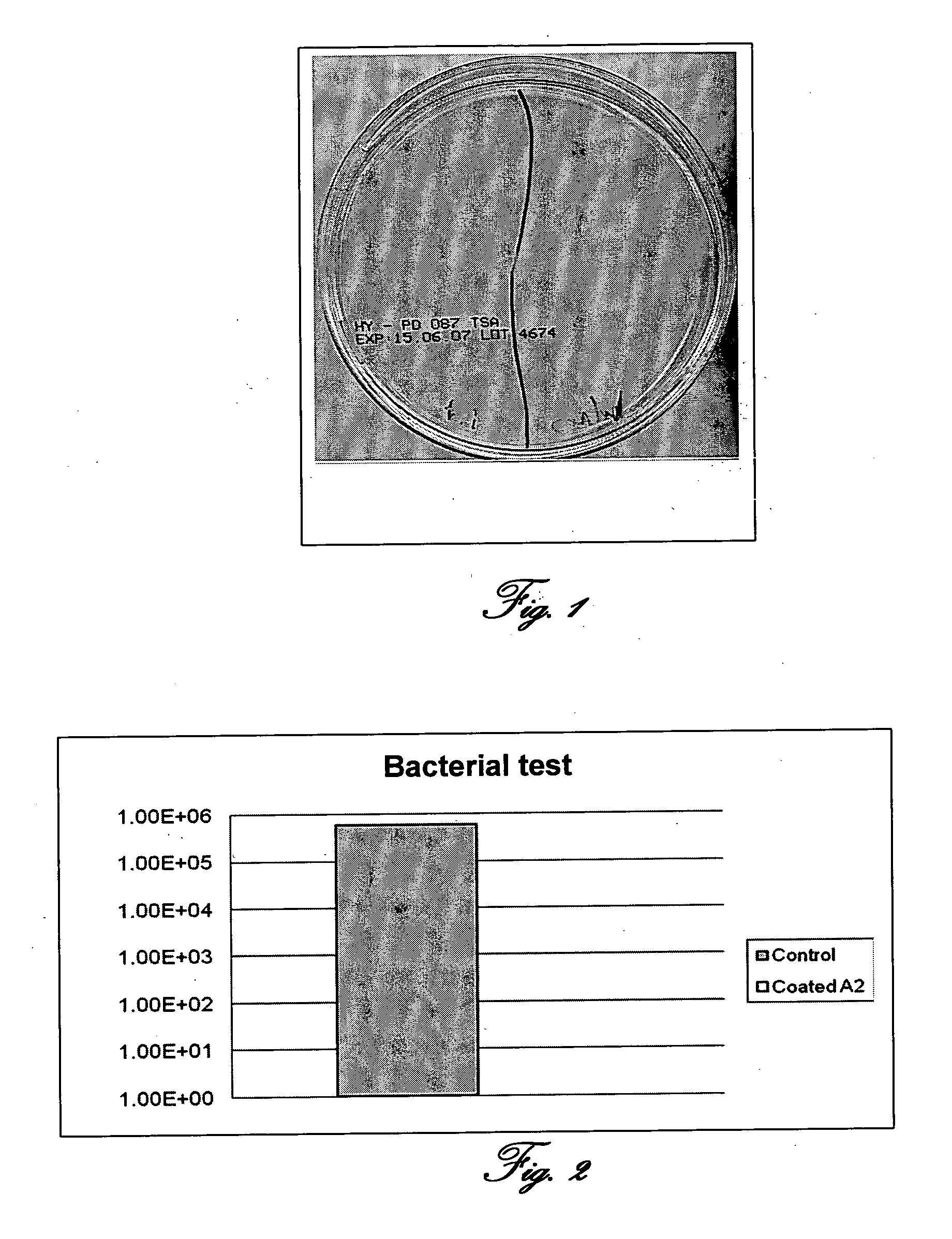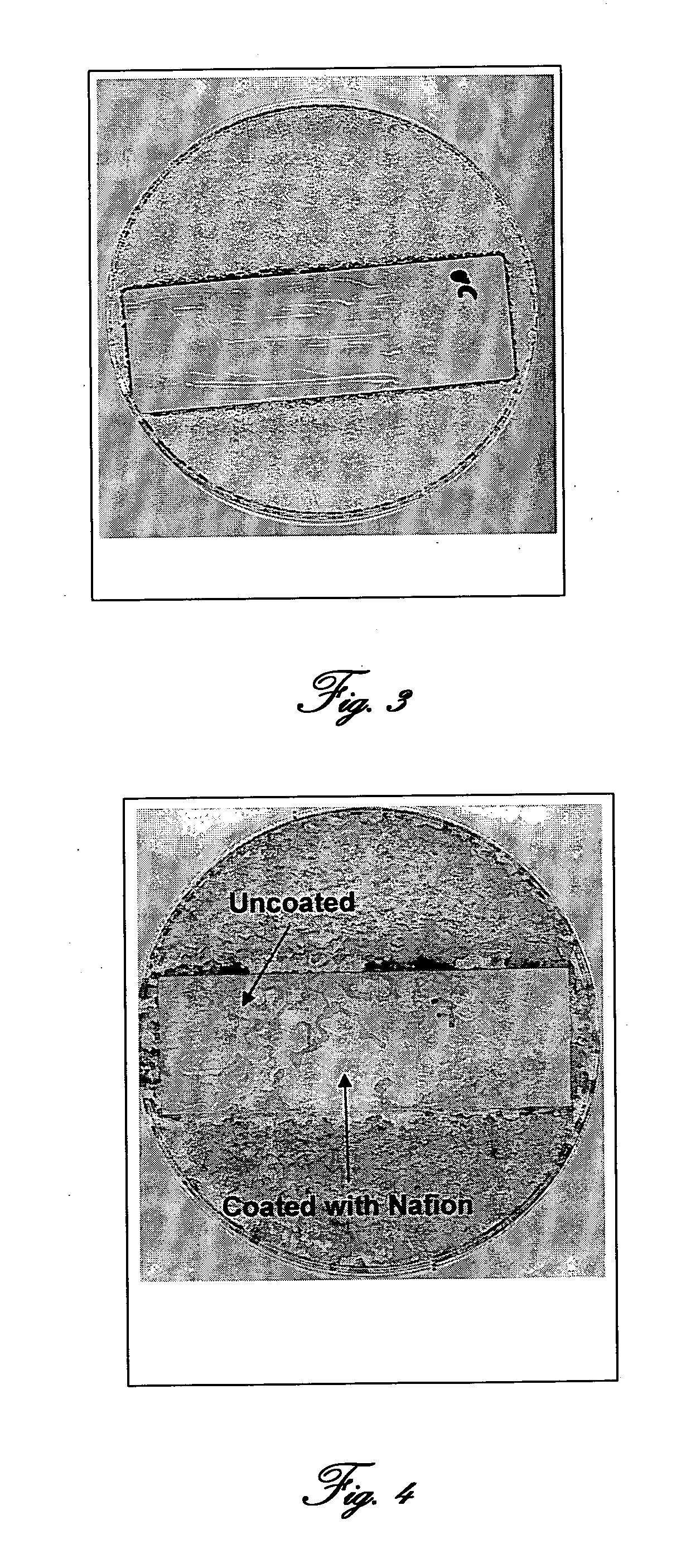Biofilm deterrence in water supply systems
- Summary
- Abstract
- Description
- Claims
- Application Information
AI Technical Summary
Benefits of technology
Problems solved by technology
Method used
Image
Examples
experiment 1
[0090]Static biofilm
Materials and Methods
[0091]The antibacterial properties of Nafion™ were tested using static biofilm experiment. Microscopic glass slides were coated with Nafion™ active material (0.01 gr / cm2 Nafion™ solution in 20% aliphatic alcohol in 4% polyacryl amid gel (PAAG)). The glass slides were placed in culture dish with E. coli inoculums, 25 ml E. coli inoculum in LB (E. coli, approximately 1×107 / ml), uncovered, 30° C. without shaking. The culture medium was evaporated and followed by a bacterial load evaluation using seeding of samples obtained from the coated and uncoated slides.
Results
[0092]Reference is now made to FIG. 1, presenting bacterial test taken from partially coated glass slide after the first cycle of incubation / evaporation with E. coli; to FIG. 2, illustrating bacterial counts of coated and uncoated glass slide after incubation / evaporation with E. coli; and to FIG. 3, disclosing partially coated glass slide after the first cycle of incubation with E. co...
experiment 2
[0094]Static biofilm
Materials and Methods
[0095]The antibacterial properties of Nafion™ were tested using static biofilm experiment. Microscopic glass slides were coated with Nafion™ active material (0.05 gr / cm2 Nafion™ solution in 20% aliphatic alcohol in 4% polyacryl amid gel (PAAG)), and placed in culture dish with E. coli inoculums, 25 ml E.coli inoculum in LB (E. coli, approximately 1×107 / ml), covered with plastic lid, 30° C. without shaking. The culture medium was evaporated and followed by a bacterial load evaluation using seeding of samples obtained from the coated and uncoated slides. The procedure was repeated for 4 cycles (21 days).
Results
[0096]Reference is now made to FIG. 4, presenting representative image of partially coated glass slide after 4 cycles of incubation / evaporation with E. coli; and to FIG. 5, showing bacterial counts of coated and uncoated glass slide after 4 cycles of incubation / evaporation with E. coli.
[0097]After the 4th cycle a bacterial sample was tak...
experiment 3
[0098]Static biofilm
Materials and Methods
[0099]The antibacterial properties of sulfonated silica were tested using static biofilm experiment. Microscopic glass slides were coated with 0.01 gr / cm2 sulfonated silica in 4% PAAG. (Sigma-Aldrich, 57221-U, Discovery® DSC-SCX SPE Bulk Packing), a self-made analog of polymerically bonded, benzene sulfonic acid on silica nano-particles, cf. http: / / www.sigmaaldrich.com / catalog / search / ProductDetail / SUPELCO / 57221-U); prepared by patent EP0386926; U.S. Pat. No. 4,933,372; or coated with Potassium Dodecylsulfate 0.05 gr / cm2. Coated slides and uncoated control slides were placed in a culture dish and covered with 25 ml (E. coli, 40×109 / ml, 25° C.). The culture medium was evaporated and followed by a bacterial load evaluation using seeding of samples obtained from the coated and uncoated slides.
Results
[0100]Reference is now made to FIG. 6, presenting bacterial counts of coated and uncoated glass slide after first cycle of incubation / evaporation wit...
PUM
| Property | Measurement | Unit |
|---|---|---|
| Fraction | aaaaa | aaaaa |
| Fraction | aaaaa | aaaaa |
| Molar density | aaaaa | aaaaa |
Abstract
Description
Claims
Application Information
 Login to View More
Login to View More - R&D
- Intellectual Property
- Life Sciences
- Materials
- Tech Scout
- Unparalleled Data Quality
- Higher Quality Content
- 60% Fewer Hallucinations
Browse by: Latest US Patents, China's latest patents, Technical Efficacy Thesaurus, Application Domain, Technology Topic, Popular Technical Reports.
© 2025 PatSnap. All rights reserved.Legal|Privacy policy|Modern Slavery Act Transparency Statement|Sitemap|About US| Contact US: help@patsnap.com



